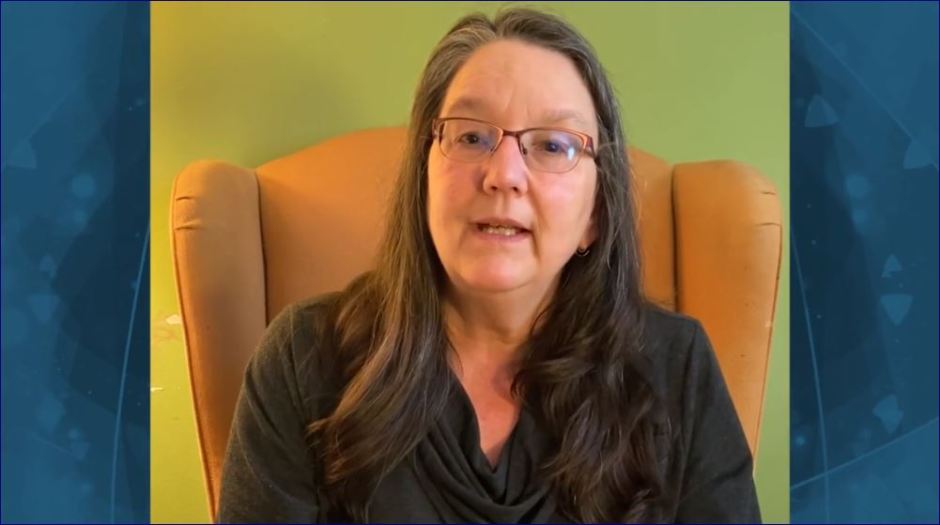by Keith Schaeffer
Thanks to emerging technology, long-term care staff across entire organizations are starting to take learning into their own hands, and that’s a big step toward enabling a good daily life for residents.
Staffing is a big concern at Pilgrim Place in Claremont, CA, as a strong economy lures caregivers away with more lucrative jobs elsewhere, while baby boomers in growing numbers still need care.
To get them to stay, “we’re having to excite these millennial and Generation Z” staff members, says Dawnyell Varela, Director of Assisted Living. After testing a new mobile learning system with a dozen co-workers, she believes getting them excited about growing in their jobs and creating home for elders may be as simple as picking up a smartphone.
“Today’s generation is always on the phone, on games, and on the internet clicking this and that,” she says. “This is how they learn.”
“A lot of people, especially the young, don’t read long, laborious stuff,” adds Angela Hunt, Administrator and Chief Operating Officer at The Cedars in Portland, ME. “They are used to cell phones and quick messages.”
Hunt and her steering committee are trying out the same mobile learning system as Varela, with an eye toward using it to prepare staff for The Cedars’ transformation to the Household Model over the next 14 months. The learning system, created by Action Pact, instructs in a concise and highly interactive manner that caregivers on the move can easily absorb, says Hunt.
Subject matter in the first series of lessons ranges from the basics of person-centered Care and the Household Model to food safety, hospitality, answering the doorbell, changing lives with toast, and more.
Complete with buttons to push, questions to answer, and praise for correct responses and completed courses, the system aims to hold the learner’s attention with short videos and dramatizations, pithy text, music, and colorful graphics. “They use a little bit of everything,” notes Hunt.
Learners can relate to the people portrayed in the new system’s videos who “wear today’s clothes and use today’s verbiage and slang – like someone I might see walking through my door at this moment,” says Varela. Characters in previous learning videos and DVDs used at Pilgrim Place were clearly out of the 1970s, she says.
Varela knew the new system would work after using it for staff in-services. Some staff members are now requesting it for future trainings. “They like it, it’s exciting for them, and the fact they’re asking for it shows we really do have something here,” says Varela.
Staff also use e-learning when they have just a minute, she says. “If they’re not sure how to do dining or something else involving our work here, they can watch a short learning module… we are fortunate to have a lot of self-directed learners.”
People learn more on their own rather than being force fed.
Socrates (469-399 BC)
In fact, we’re all self-directed learners – everybody has the drive to learn more, says LaVrene Norton, Action Pact founder and Executive Leader. Think of the times we’ve gone on the internet to learn things like how to make hummingbird nectar or change our car’s oil, she says.
It’s been known since at least Socrates’ time that we learn and retain information better by grabbing it when we want and need it rather than being forced to sit in a classroom. Self-directed learners often exhibit superior critical thinking, problem solving, and leadership skills and higher job satisfaction.
Perhaps I buy an old house that needs a garbage disposal, a kitchen sink, and tile on the bathroom floor. So I search the internet for the best garbage disposals and sinks to buy, the tools needed, and how to tile the floor – all the instructions are complete with video on YouTube, including for the specific brands of disposals and sinks I buy.
And then I’m so proud of myself!
“We need to create for our staff that same kind of curiosity and excitement that drives people to learn on their own,” says Norton. “If I’m self-directed, I’m going to take the initiative, not just in learning, but also helping elders have a good day every day in their home.”
Long-term care organizations often fail to prioritize learning among staff, she says. Nurses learn critical thinking skills in college, but CNAs and staff in dining services, housekeeping, activities, and maintenance aren’t given the opportunity and time to develop their own analysis, judgment, and decision-making abilities.
E-learning enables staff in all positions to develop critical thinking, adds Varela.
A nurse may know how to respond to a resident living with Alzheimer’s who is angry and lashing out, she says. But a housekeeper walking into that kind of situation may not know to redirect the resident and not take his or her anger personally.
“So when I’ve seen that – and I have,” says Varela, “I’ve had them watch a learning video, and they told me, ‘Thank you so much Dawnyell, now I understand.’”
Self-learning on the internet is less scary than in the classroom, she adds. As a 40-something studying for a new career in long-term care, she felt awkward going back to class after 20-plus years as a restaurant staff trainer. “I felt a little intimidated. I didn’t want to raise my hand; I didn’t want to look foolish,” she recalls.
Now she goes on-line to fulfill her annual requirement of in-services. “I can learn at my own pace, and if I mess up, I mess up with just me and my computer and not in front of a big class,” says Varela.
Managers in organizations often fall into the trap of assuming people don’t want to learn, says Norton, simply because they aren’t strong readers or they didn’t go to college. It seems most reasonable for those reasons and because of the turnover to just give them a list of repetitive tasks to complete every day. As a result, opportunities for growth are minimal.
“People don’t need to be told what to do, they just need to have permission and encouragement to grow and learn, plus the resources and time to make it happen,” she says.
The old incentives for retaining staff – a slight pay raise, a modest change in job title – aren’t working, she says. Instead, we need to ignite the desire for self-directed learning so staff can find meaning and satisfaction in their jobs.
“We want to create hunger for knowledge and skills. The internet and mobile learning offers a way that’s fun, exciting, and interesting so that staff want to learn more,” she says.
People who aren’t strong readers can learn from creative graphics and videos. A single, still image can convey a complex idea, enabling large amounts of data to be absorbed quickly. When that picture and its story is shared with everyone in the organization over the internet, person-to-person, and in group meetings, it sparks a new culture of self-directed learning, says Norton.
So how do we create a culture that values learning?
Start from day one
Stimulate learning from the moment prospective staff walk through the door by giving them internet links to training on person-centered care so they can decide if they really want the job, says Norton. And then proceed after hiring with ongoing, in-person training to quickly integrate them into the workplace culture.
Focus on growing self-awareness of the person’s own ability to learn and prepare them for participating in functional teams where learning develops naturally. Hold deep conversations with every staff member at regular intervals – perhaps at 90 days after hiring and every six months thereafter, she urges.
Make learning available 24/7
Pilgrim Place and The Cedars provide laptops and iPads for staff to access elearning modules and other resources on the internet and from training videos acquired by the organization. These and other mobile devices can be used for virtual discussions among staff and for sharing ideas and information with other organizations.
Consider keeping an iPad on the kitchen counter in the household, so that staff can access cooking websites to learn how to prepare a resident’s favorite childhood meal.
Encourage staff to sit down with a resident or two in the living room to watch an interesting learning module, followed up with discussions about daily life in the household. Result: an activity for the residents at the same time staff is learning! Other self-learning techniques like community and learning circles and work team huddles could be held daily.
Be creative! Richfield Retirement Community in Salem, VA, established a “transformation center” open 24/7 where bulletins, posters and always available videos chronicle the community’s progress toward the Household. Staff, residents, and visitors can enjoy a moment of respite in comfortable chairs with coffee and snacks provided while learning about culture change.
Make learning fun
Scavenger hunts, either on-line or within the physical community, are effective and entertaining ways to engage staff and residents in learning. Try giving everyone a list of the Essential Elements of the Household Model and ask them to search for examples of, say, how a household demonstrates home as sanctuary, or how the dining room fosters a sense of grace. Follow up all such activities with group discussions in learning circles about what was learned.
Reward learning with praise and encouragement
Staff thrive on being told when they do well, says Varela. She maintains a “Wow!” board for posting “praise reports” for everyone to see when a staff member accomplishes something noteworthy.
Often, staff members with little formal education feel they can’t learn like more successful people. “Let them know they can; that they can be in charge of their own learning,” says Norton. “Asking them what they would like to learn more about in order to be the best they can be will help them see themselves as self-directed learners.”
Involve residents
“Our residents are very curious about how we are learning and they want to see,” says Hunt. Elders participate on the steering committee that is reviewing the Action Pact mobile learning system.
At Pilgrim Place, staff plug their electronic gadgets into the living room TV and watch training videos with residents. “There’s not a single video in the new mobile learning system I’ve seen that residents could not participate in and learn from,” says Varela.
But think critically about what is appropriate to discuss with residents, cautions Norton, and then work and create learning activities together while chatting with residents at the dining table.
“Try to get a sense of what it would feel like if this were a good day at home and a dear friend stops by. How would that look and feel? If we engage staff in talking and thinking about that, we can begin to grow critical thinking skills in self-led teams,” says Norton.
Giving staff the tools and encouragement to pursue self-directed learning empowers caregivers to be successful and find satisfaction in their work, and that translates to better care for residents.
“It’s a parallel process,” says Norton. “If we want a better life for residents, we must want a better life for our staff. If we want the staff to ask the residents, ‘What do you need?’ or ‘What do you want to do today?’ then we have to ask the staff, ‘What do you want to learn?’ or ‘What resources do you need, and how can we help?’ ”











